This will be our fourth installment of this feature, which first ran in February of 2019. I’ve been so pleased at the response. The answers to our questions will give our readers some insight, we hope, into the various methods these writers use to produce their mystery fiction. Here are the four for this issue.
First up is Priscilla Paton. Welcome to the column, Priscilla.
BIO: Priscilla Paton writes the Twin Cities Mystery Series featuring Detectives Erik Jansson and Deb Metzger. The first in the series, Where Privacy Dies is now available (Coffeetown Press), and the second, Should Grace Fail, will be published in 2020. In Where Privacy Dies, it’s not the executive’s corpse in a wetland that disturbs the detectives—it’s the dead man’s shoe where the photo of a missing girl is discovered. In Should Grace Fail, a disgraced policeman turned rescuer of trafficked women is found dead in a dumpster, and the detectives must ask if saving others is fatal.
Priscilla draws inspiration from her rural childhood in Maine, her current home south of Minneapolis, her volunteer work, and the darkly comic possibilities of the detective genre. You can follow Priscilla on Goodreads (priscillapaton), Facebook (priscillapatonmystery), Twitter (@priscilla_paton), or priscillapaton.com.
You have a new idea for a mystery that you want to develop into a book or short story. What are your first steps in developing the idea to transform it into a novel-length piece? What’s the first thing you do after jotting down the initial idea?
Writing is a sustained anxiety attack, and ideas come from everywhere and nowhere. In writing a series, I may need to command an idea to come, like a dog: “Idea, come. I have a treat. The treat has caffeine!” I follow the news for a case that triggers my interest because of its emotional impact, the kind of person involved, or striking circumstances. The case suggests a theme like violation of privacy or betrayal. Then I have an impulse about my fictional characters—like a stalked girl, a compromised executive, a former opioid user. I write out names and brief descriptions of key players. If the names, don’t come to me, I trawl business websites and social media pages. Minor characters like “Bent Nail” or “Whinette” in Where Privacy Dies pop up during the physical act of typing away and channel types like “crazy friend” or “office nag.” Then I imagine the situation that threatens the characters, such as a corporate scandal, and come up with a body. I know who’s dead when I start and who did it, though not the full why.
My books are character-driven, though my characters are bad drivers who crash into each other.
What additional things do you do to shape that idea so it becomes the mystery you thought it could be?
The development phase is either Directed Randomness or Organized Chaos. There’s curiosity at this phase and the thrill of the hunt. I read up on subjects like data security or opposition research. For Should Grace Fail, I’ve been researching the opioid epidemic. I try to push past my introversion to interview by email, phone, or in person specialists on topics like autopsy protocol, cadaver dog training, or teenage addiction. Some say no, and for those that say yes, their generosity makes my novels smarter. I prowl settings in the Twin Cities and greater Minnesota. Housing tours are one way to do that. I’ll visit restaurants and bars. In the case of one dive bar with a reputation it was a virtual online visit with the assist of a maps program.
I’m fortunate in that I’ve met people from many walks of life—social workers, law enforcement types, immigrants, finance experts, musicians, lawyers. If I told you how I met them, I’d have to kill you. I discreetly observe their mannerisms, but on occasion have bluntly asked, “I’m writing a mystery. What’s been your experience of X?” If I’m not slugged or physically removed from the premises, the answer can be helpful.
I do not “finish” research before writing because then I’d never get started. I write along the way and do additional research if needed. Research can turn up fascinating skeletons.
Do you use Character Charts, plot outlines, pictures, notebooks, bulletin boards, etc.? Which methods have you tried and which have worked best for you?
I carry a notebook to jot down observations and take photos with my cell phone. I keep a journal on my computer where I list links to news stories, ideas, snippets of dialogue, and questions for myself. I’ll have a half page description of the story at the beginning, but I have to develop some content before I can write a plot synopsis. I can’t start with a full outline. I suppose that makes me a “seat-of-the-pantser.” I prefer the term “builder” as a compromise between outliners and pantser. I think in terms of characters and their conflicting desires and draft out scenes of their interactions. I’m a brooder; I can’t rush through a first draft. After developing fifty-sixty pages of substance, I restructure. I write more, I restructure more. I’m not recommending that method: it’s my character flaw. I also write a chapter outline as I go along. For each chapter, I’ll list characters, setting, emotional value, and plot point. So “Monday morning, Erik Jansson interviews Jonathan Lewis on corporate corruption in expensive office, low-key rising to fear on Jonathan’s part, plot point—files have disappeared.” This ensures that the chapter serves the story. The chapter description is not law, however. If, thank god, better ideas occur later I update the outline. Also, characters-in-conflict give rise to action, and I think about the movie potential of a scene. When the novel has a rough shape, I use a big white board calendar and different color markers for characters to visually organize the plot. By this point, I feel more secure in the story and my characters let me sleep at night.
Depending on the method you use, how successful has it been in fleshing out the idea? Or, do you begin with one method and find yourself gravitating to another?
In “restructuring,” I can become fixated on details or getting a character completely right and not move ahead in a timely fashion. I’m not a fast writer, but I’m pushing myself more to complete the early drafts without so much fussing. On the other hand, brooding and trial-and-error allow me to create depth and spontaneity. Readers tell me that my writing is entertaining and has substance.
Do you find that the original idea changes as you work with it? Does the idea ever become something entirely different than when you started?
I have a general theme behind the books. It’s assaults on privacy in Where Privacy Dies. In Should Grace Fail it’s the danger in being a savior to others. But I don’t let strict adherence to a theme impede the characters’ stories.
Does the method you use allow flexibility in development? How?
For me, it’s all about development through writing out and connecting scenes (see “pantser” above), and revising and revising and revising to sharpen timing, wit, and suspense. A warning: long hours at a computer can inhibit bodily flexibility. Hence a yoga mat as writing equipment.
Choose a novel of yours and walk us through its development from idea to finished work. Please tell us about the methods used and how the idea changed, if it did.
There’d be too many spoilers with Should Grace Fail, so it will be the first in the series, Where Privacy Dies. My husband and friends love Scandinavian Noir, its damaged detectives with terrible personal habits and beloveds lost to murder. Detective Erik Jansson came to me as a twist on that. Erik has dark moods but he’s damn healthy and his family is annoyingly alive. He needed an irritant, so I came up with Detective Deb Metzger. For her power and will-to-serve I drew from a woman shot-putter I knew and a doctor-advocate for the underserved. Deb’s personality is her own. As for the opening scene, I was birdwatching in a wetland and thought, “what a great place to hide a body.” The wetland by the MSP airport is perfect because it’s wild and urban.
Also, real crimes against children distressed me, along with the security breaches that hit many of us, like the Target data-breach of customer information. Also, the British News-of-the-World scandal from years back haunted me: reporters hacked into the phone of a murdered adolescent and spread false hope that she was alive. With research for this first mystery, I was overwhelmed and initially stayed too close to the mechanics of actual cases, which weighed the book down. To paraphrase Agatha Christie, real people [and real crimes] get in the way. I used a critique service through The Loft Literary Center in Minneapolis to improve plot structure, and I freed my characters to be themselves. When Coffeetown Press acquired Where Privacy Dies, the editor challenged me to streamline the plot further. It’s still complicated, because that’s the nature of cover-ups.
The biggest change in concept involved two suspects in the killing of an executive. As I “discovered” more about them in revision, and they became psychologically complex and their stories tragic.
ADDITIONAL THOUGHTS:
A few final thoughts: I would not have attempted a novel if I had not read Walter Mosley’s This Year You Write Your Novel. I learned from Mosley that one could start with an impulse and without an outline—no need to have the whole book in my crowded little head, just start writing. On the other side of the equation, I relied on Elizabeth George’s Write Away to bring order to the chaos.
And the point of submitting yourself to the anxiety attack of writing is to have fun.
I welcome Susan Van Kirk next. Her bio was done before she became President of the Guppies, so I’ll add that here. Here is the rest of her bio:
Susan Van Kirk was educated at Knox College and the University of Illinois. Three May Keep a Secret, her first mystery novel about the small town of Endurance, was published in 2014 by Five Star Publishing/Cengage. The Locket: From the Casebook of TJ Sweeney, is an e-book novella available on Amazon. Marry in Haste and Death Takes No Bribes are also available from Amazon in Kindle and paper formats. A Death at Tippitt Pond, a Sweet Iron Mystery, will be out June 2019. Her website is at http://www.susanvankirk.com
You have a new idea for a mystery that you want to develop into a book. What’s the first thing you do after jotting down the initial idea?
Think. A lot. This is harder than it sounds. In this crazy, noisy, hyper-speed world, it is not easy to sit in a chair with no noise and listen to your own thoughts. In the Midwest, where I live, that happens a lot in winter storms when the power goes out and all you have is silence. I have experience. Try it sometime; it’s tougher than you think. Once I come up with an initial idea for a book, I consider all the things that won’t work, and then I think about what will work. I throw away possibilities and decide what to keep. Sometimes an initial idea simply won’t work. Other times my mind is racing with possibilities, and this is when I know I have a great idea. Then it is time to start taking notes.
What are your first steps in developing the idea to transform it into a novel-length piece?
I buy a loose-leaf binder to use as the “bible” for my new book or series. I begin thinking about characters and develop backstories for the main ones and take notes on minor ones. These ideas change as time goes by, but I make sure I write down changes so I’m consistent throughout the book. Then I consider what to research. All the mysteries I’ve written have combined mystery and history. My upcoming book, A Death at Tippitt Pond, is about the 1971 murder of a teenager, and the bedroom of the murdered woman was kept as it had been when she was alive. So now I need to add clothing, chunky shoes and sandals, headbands, geometrically shaped jewelry, 45-rpm records, and books. Oh, and my favorite navy CPO jacket from back then.
I also research by interviewing people: police detectives, coroners, historians, fire chiefs, a district attorney, etc. Once I have most of the research done, I’ll need to add bits and pieces via email and phone call if I write myself into a situation where I need more research. I can’t exaggerate how people are happy to talk about what they do.
Usually I know the first scene and the last scene. The difficulty comes in between.
What additional things do you do to shape that idea so it becomes the mystery you thought it could be?
I’m very big on structure. Context is important. I am a devoted follower of K.M. Weiland when it comes to structuring my mysteries. I’ve tried other structure theories like Jane Cleland’s plot mapping and used some of her suggestions, but I always seem to go back to Weiland. I discovered her website in 2012 when I first began writing mysteries, and I recently read her book, Structuring Your Novel. It works for me because she sets goals I must accomplish by certain plot percentages in the story. Since I read e-books, as well as paper books, a percentage plan made sense to me. I often see Weiland’s plan followed in the mysteries I read.
Each chapter must have a purpose and move the plot forward. As a mystery writer, I have a hard time doing what I want [getting the audience to know the characters] and what editors and publishers want [a body falling dead in the preface or the first sentence or the first chapter or at least before page 30.] I do a lot of freewriting about possible terrible things I could do to my protagonist. Sometimes I laugh demonically as I list them. It depends on how much I like or dislike my character. I devise plot twists and turns and ask myself “what if?” a lot.
My longest work is taken up with thinking, researching and plotting. Assuming those are done thoroughly, writing the book should go quickly. I usually write a chapter or scene a day. However, I always come upon situations and characters I change from what I originally thought they would be.
Do you use Character Charts, plot outlines, pictures, notebooks, bulletin boards, etc.? Which methods have you tried and which have worked best for you?
I use character descriptions and backstories. Also, I use multiple timelines because I’m math-challenged. My readers will catch me if I goof up on a date or age. As I mentioned, I use outlines and a “bible” for each book. Bulletin boards haven’t worked for me. I’ve never used index cards. I have been known to cut pictures out of magazines to help me visualize how characters look. I make maps of the small towns I write about. In Marry in Haste, part of the Endurance series, I made maps of the town of Endurance in the present day and back in 1880 because my book had a plot in each time period. It was so much fun thinking about the blacksmith shop, the confectionary, the ribbon maker’s, the dry goods store, and the homeopathic physician. Then, there was Mercy Street where God-fearing females didn’t go because of the brothels and saloons. Being able to visualize the town in the 1880s was important. Maps helped.
Depending on the method you use, how successful has it been in fleshing out the idea? Or, do you begin with one method and find yourself gravitating to another?
After writing six mysteries, I’m set on the method I’ve described. It has worked for each mystery, and each is different. I sometimes pick up ideas at book conferences or from author blog posts and try them out. For instance, Micki Browning suggested I consider the entire story from the villain’s viewpoint. It helped! I still read several craft books every year. Often, the new ideas work; sometimes they don’t. I think the method I’ve settled on has a lot to do with my past life in teaching. Research and planning were important, and structure was always part of how I taught. It also works for mystery writing.
Do you find that the original idea changes as you work with it? Does the idea ever become something entirely different than when you started?
I never get away from the original idea because I’ve thought it through carefully and decided it will work. However, many other things change. I began A Death at Tippitt Pond in New York City at the public library and wrote four chapters in that location and on Long Island. Later, I dropped those chapters and started it in a different place. It’s a combination of cozy/traditional mystery, and, as my editor reminded me, starting it in the small town made more sense even if the protagonist arrived there from New York City. I’ve dropped entire chapters, and I’ve knocked my head against the wall when a much-loved plot point didn’t work. But entirely different? No.
Does the method you use allow flexibility in development? How?
Yes. As I mentioned earlier, I am an outliner, but also use a combination of outliner/pantser. In each chapter I write, I know its purpose, the characters and their motives, the setting, and how it moves the plot. However, the dialogue, description, and direction each chapter takes are totally fluid. I can write it any way I choose if it moves the plot forward and accomplishes my goals. Dialogue may not turn out the way I thought it would at all. I might add or subtract characters. Often, I delete a conversation and start over. Sometimes I drop out chapters and must figure out how to get important information in my story in another way. Often my editor drops a chapter for me. She’s helpful that way.
The framework is set in my head; the details are very flexible.
Choose a novel of yours and walk us through its development from idea to finished work. Please tell us about the methods used and how the idea changed, if it did.
My second mystery about the small town of Endurance came out a full two years after the first book. When my publisher sprang this shocking detail on me, I decided I should self-publish a novella to keep my audience interested. I named it The Locket: From the Casebook of TJ Sweeney.
So here is where the thinking part begins. My Endurance protagonist is recently-retired high school teacher Grace Kimball, and the town’s detective is a beautiful biracial woman named TJ Sweeney, who is Grace’s friend and her former student. I saw this novella as an opportunity to move TJ to the front. Figuring I could write a story about TJ’s past and family relationships, I devised a plot about a hate crime that happened in the 1940s. Since TJ has plenty of backstory herself about her experiences as a biracial woman growing up in this 98% Caucasian town, I wanted to make this crime very personal so she could mull over her own demons. This would be the subplot.
The idea. My mysteries also contain my favorite subject, history, so I wanted to go back to the 1940s when my father was in WWII and home on leave. My parents loved to go dancing to big band music at a place called The Roof Garden in my hometown of Galesburg, Illinois. Throughout the Midwest in the 1930s and 1940s, small towns had summer venues like this on top of downtown buildings. The big bands traveled throughout the region, beginning in Chicago, and playing at dance venues in small towns. The last place my victim is seen is at the Roof Garden, celebrating her anniversary with her husband.
This begins the research part of my method. I had to find out about the Roof Garden in my town. The public library had huge folders of reference materials with photographs and first-person narratives of that dance venue. This helped me describe the setting. I also interviewed an amazing octogenarian who had gone to the venue as a teenager and danced there. I created an elderly character whom TJ Sweeney interviews about the Roof Garden. Research + fiction.
In the present day, construction workers find this murder victim’s bones when they are digging a foundation for a small building on the edge of town. Now I need to know about forensic anthropologists and systems of identification. I read books on forensics and interviewed a medical examiner who could discuss victim identification. Since Detective TJ Sweeney is the main character, I have more research to do. [Here is where my editor says, “Are you going to research forever or are you going to start writing?”] I sigh. This plot idea gives me a wonderful opportunity to create a quirky coroner who explains the forensics. Again, research + fiction.
Developing the plot outline. I had to throw some real problems into the mix. From here on, I created one problem after another about the victim’s identification. A crime from long ago makes the identification perfect for difficulties. Just when TJ thinks she has solved another problem in identifying the woman, she hasn’t. For example, she eventually finds a person whom she believes is the victim’s daughter, and she can compare their DNA. Unfortunately, the daughter turns out to be a step-daughter. The main plot is a series of hopeful clues that end up not working out, until finally, they do.
In the subplot, Grace Kimball makes a cameo appearance in a couple of scenes so TJ can talk with her about this hate crime and her own experiences with racism. TJ’s mother also has a discussion with her daughter based on a true story my step-mother witnessed and told me about racial prejudice in the 1930s. It so astounded me that I remembered it and pulled it out of the deep recesses of my memory for this novella.
My main characters were already developed in the first book of this series, but this novella gave me a great opportunity to create minor characters and let my readers view the past life of my detective. In each new character, I devised talents that would move the plot forward.
I used the methods discussed above. Interviewing a local coroner gave me a perfect solution to my mystery, one I used to replace my original solution. My method is flexible enough to make this replacement work.
Judy Sheluk is next in line.
BIO: Judy Penz Sheluk is the author of the Glass Dolphin Mystery and Marketville Mystery series, and the editor of The Best Laid Plans: 21 Stories of Mystery & Suspense. Her short stories can be found in several collections. Judy is also a member of Sisters in Crime, International Thriller Writers, the Short Mystery Fiction Society, and Crime Writers of Canada, where she serves as Vice Chair on the Board of Directors. Find her at judypenzsheluk.com.
You have a new idea for a mystery that you want to develop into a book. What are your first steps in developing the idea to transform it into a novel-length piece? What’s the first thing you do after jotting down the initial idea?
The first thing I do is type “Chapter 1” and then I start writing. Beyond coming up with the initial concept, I’m a complete panster and I refuse to set daily word counts because then writing seems like work to me, and if it seems like work, it’ll read like work. I aim for a chapter a day (never more) and try to leave each chapter with enough of a hook to make me want to come back the next day and write the next one. I tend to write short chapters, but even so, it can take a few hours to write 800 words. If I get stuck (and that happens) I know (from experience) it’s because the book has taken a turn that won’t work out. So I backtrack to where it was working, ditch the chapter that isn’t, and start again. I used to be “precious” about keeping every hard-fought word, but I’m over that now!
What additional things do you do to shape that idea so it becomes the mystery you thought it could be?
I was a freelance journalist/editor from 2003 to 2018, and as a result I’ve developed strong research and interview skills. I will spend hours researching a small plot point and if it’s necessary, I’ll contact an expert. For example, in A Hole In One, there’s a silent auction table for charity, and I wanted my protagonist, Arabella Carpenter, to donate the perfect auction item on behalf of her Glass Dolphin antiques shop, something she might have lucked into in a box lot at a “noisy” auction. I thought an antique perfume bottle might be fun, and so I contacted the International Perfume Bottle Association, and they in turn put me onto an expert, Helen Farnsworth. Helen recommended the Herman Tappan Perfume Bottle Company, and even sent me a few photos. It’s not a large part of the book—maybe half a page—but a perfume bottle collector reading the book will appreciate the attention to detail, and other readers can learn a bit. I wrote a bit about the Herman Tappan Perfume Bottle Company on “Facts in Fiction” section on my website. facts-in-fiction/herman-tappan-perfume-bottles/
Do you use Character Charts, plot outlines, pictures, notebooks, bulletin boards, etc.?
I do have a notebook for every work-in-progress, and I also keep one by my bedside table, along with an LED pen (to write in the dark when an idea strikes me in the middle of the night) and also a small notebook in my purse. Basically, I use these to write down ideas I don’t want to forget, possible character names, timelines, and ages of characters in assorted years (i.e. 25 in 1970, 40 in 1985).
Which methods have you tried and which have worked best for you?
In my early days, I was swept up with the buzz of Scrivener, a writing software program many authors love. Despite taking a course in it and really trying, I hated it and went back to my Word document. Maybe it’s because I freelanced for so many years…
I’ve also tried outlining (yet another course). I developed a great outline and then proceeded to veer off course by chapter 3. The only thing that seems to work for me is pantsing a chapter a day.
Depending on the method you use, how successful has it been in fleshing out the idea? Or, do you begin with one method and find yourself gravitating to another?
I try to flesh out my ideas as I write the chapters, but I do find myself going back and filling in blanks, or adding in clues. Sometimes that’s during the first draft, but it’s more often in the second (or third) draft. But overall, I have a system that works for me and I trust it.
Do you find that the original idea changes as you work with it?
No. My concept, whether it’s “Greedy developer comes to town to build a mega-box store on the town’s historic Main Street” – The Hanged Man’s Noose — or “Thirty-six-year-old woman inherits a house from her father under the proviso she live there and find out who murdered her mother thirty years earlier.” — Skeletons in the Attic — I stay true to the original idea.
Does the idea ever become something entirely different than when you started?
Not so far. I never say “never” (my mom always said, “Never throw never far away, or you’ll pick up never again one day).
Does the method you use allow flexibility in development? How?
I can’t imagine any writing style being more flexible than being a complete pantser. It’s a bit like telling the story to your best friend over a glass of wine, and maybe after the second glass you embellish the odd detail….
Choose a novel of yours and walk us through its development from idea to finished work. Please tell us about the methods used and how the idea changed, if it did.
The idea for A Fool’s Journey, book 3 in my Marketville Mystery series, came to me when I read an article in my local paper about a young man who’d left home to “find himself” 15 years earlier. No one, not friends or family, had seen or heard from him since.
That story haunted me for days and I knew that the only way to get it out of my head was to write my own version of the story. I started by contacting Lusia Dion, the founder/owner of missingadults.ca. When she learned I wanted to write a work of fiction, she was careful to caution me. “Just don’t use the word ‘closure.’ That’s a TV term. There are always unanswered questions, regardless of the outcome.”
With Lusia’s guidance, I was able to create the character of 20-year-old Brandon Colbeck, who left home in March 2000 to find himself. Nineteen years later, his family—a stepfather, mother, and stepsister—have all tried to move on with varying outcomes. My job as a writer was to put my protagonist, Calamity (Callie) Barnstable and her firm of Past & Present Investigations, on the case to find out what happened to Brandon. But it was also my job to illustrate how his disappearance had impacted the family.
Callie’s team is an eclectic mix. There’s her best friend and business partner, Chantelle Marchand, who is into genealogy; Shirley Harrington, a recently retired research librarian with a gift for digging into old newspaper archives; Misty Rivers, tarot card reader; and Arabella Carpenter, owner of the Glass Dolphin antiques shop (Arabella is the protagonist in my Glass Dolphin mystery series…her role in the Marketville series is small, but not gratuitous).
In addition to Callie’s team and Brandon’s family, the trail leading to Brandon involves a tattoo shop owner (mega-thanks to my niece, Ashley Sametz, for all ink-related information, since I’ve never even been inside a tattoo parlor), an art gallery specializing in tattoo flash (artwork), and a former IT specialist and white hat hacker who now owns a totally tech-free pub called Unwired. If you want you cell phone on, Unwired is not the place for you (it is a place I’d love to visit, however).
While my basic “Find Brandon” concept never changed, I did spend many hours discussing various endings with Lusia, until I finally reached a conclusion I could accept. And now, here’s a bit about the book:
In March 2000, twenty-year old Brandon Colbeck left home to find himself on a self-proclaimed “fool’s journey.” No one—not friends or family—have seen or heard from him since, until a phone call from a man claiming to be Brandon brings everything back to the forefront. Calamity (Callie) Barnstable and her team at Past & Present Investigations have been hired to find out what happened to Brandon, and, if still alive, where he might be. As Callie follows a trail of buried secrets and decades-old deceptions only one thing is certain: whatever the outcome, there is no such thing as closure.
We’ll finish up with A R Kennedy
BIO: A R Kennedy lives in Long Beach, New York, with her two pups. She works hard to put food on the floor for them. As her favorite T-shirt says, ‘I work so my dog can have a better life’. She’s an avid traveler. But don’t worry. While she’s away, her parents dote on their grand-puppies even more than she does. Her writing is a combination of her love of travel, animals, and the journey we all take to find ourselves.
You have a new idea for a mystery that you want to develop into a book. What are your first steps in developing the idea to transform it into a novel-length piece? What’s the first thing you do after jotting down the initial idea?
All my novels have started with a ‘What if?’ question.
Then I mull around the idea for a while.
What if this happened? And then this? And then that?
Who is the main character?
How does he or she react?
And what made them react that way?
Sadly, due to other life priorities, I often mull around an idea for a year before I start really working on the novel—putting words on the page.
What additional things do you do to shape that idea so it becomes the mystery you thought it could be?
Research. Research. And more research.
I’ve attended The Writers’ Police Academy for years to learn from forensic experts, law enforcement, and legal experts. I’ve taken countless online courses on writing and forensics.
For Sleuth on Safari, I watched YouTube videos from travelers on safari to see how animals move, sound, and interact. I have hundreds of photos from my trip but no videos. I found the subtleties of the animals’ movements helpful in getting the details right in the novel.
And I read in the genre I’m writing in.
Do you use Character Charts, plot outlines, pictures, notebooks, bulletin boards, etc.?
Sleuth on Safari is the first novel I have ever written with a plot outline. It was also the easiest novel I’ve ever written.
Although, I’m an organized person in my real life—my co-workers call me diligent; my mother says ‘particular’—my writing has always been chaotic. The beginning and the end is written first and then the middle gets filled in. I jump around a manuscript mercilessly.
I always carry a notebook (sometimes multiple notebooks) where I jot down new ideas for upcoming projects or new scenes, ideas or quotes for what I am currently working on.
I’m a visual person so pictures are always helpful and I’ve used them for all my works. I’ll save them in files to reference what places look like. As I wrote earlier, I watched a lot of YouTube videos for Sleuth on Safari. I also spent a lot of time reviewing my own scrapbook from my safari for details regarding travel, lodgings, food, and game drives.
Which methods have you tried and which have worked best for you?
A plot outline has worked best for me but I’m not consistent with it. To date, I’ve only used it once in 11 books (10 written, plus one work in progress, the sequel to Sleuth on Safari).
I tried Scrivener but failed miserably.
Depending on the method you use, how successful has it been in fleshing out the idea? Or, do you begin with one method and find yourself gravitating to another?
It depends on the idea. A plot outline is an outstanding way for me to stay structured. If I’d only use it consistently…
Do you find that the original idea changes as you work with it? Does the idea ever become something entirely different than when you started?
No the original idea stays the same. The characters may follow a different path to get to the end. They may meet different obstacles (people, events, places) but the start and end has always stayed the same.
Does the method you use allow flexibility in development? How?
My co-workers at my full-time job may find it astonishing, but yes, I am flexible. I don’t know where the characters will go when we get started. The more I write them, the more they reveal.
Choose a novel of yours and walk us through its development from idea to finished work. Please tell us about the methods used and how the idea changed, if it did.
As I said earlier, Sleuth on Safari was the easiest novel I’ve ever written. (I said ‘easiest’ not easy.)
While in South Africa almost 5 years ago, I was enjoying dinner outside with fellow guests. One of the guides was eating with us. He wasn’t my daily guide on the trip. I asked him a question which I thought was funny and he did not. It inspired the idea of ‘Sleuth on Safari’.
I asked him why a lodge employee had to walk us to our rooms at night. I thought they were afraid we would get lost, which I found highly unlikely on the short path to our individual dwellings. My fellow travelers were horrified when he answered, “Because of the animals.”
He continued that sometimes local wildlife could get into the lodge’s area. I, of course, had to know more. What type of animals? And what would the employee do to protect us? How often does this happen?
While everyone else enjoyed their gourmet meal, under the clear night sky, I wondered—What would happen if an animal did get in? What happened if a traveler knew this and used it to cover up a murder?
I was working on another novel at the time and filed the thought away. But it wouldn’t leave me.
I enjoyed my safari immensely. I wondered if readers would enjoy a cozy mystery, with a young female protagonist new to travel, set internationally. A new series, The Traveler Cozy Mystery series, was born.
Who are the people on this trip? Where are they from? What kind of people are they? Well-traveled? Novices? I used my years of traveling to form these characters.
I did character sketches for lodge staff and fellow travelers and why they would each be suspects.
I fully plotted out the novel. On a legal pad, I used Michael Hauge’s Six Stage Plot Structure. (I attended one of his classes years ago. It was very helpful. https://www.storymastery.com)
I filled out each section—with little bullet points underneath for specific scene ideas. I still have it somewhere…




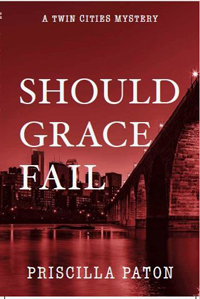

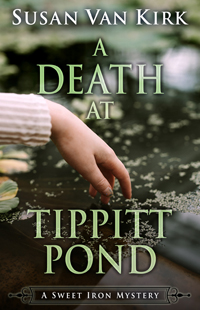
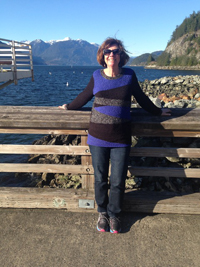
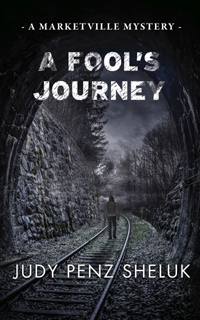
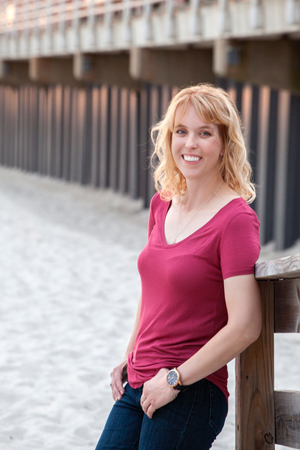
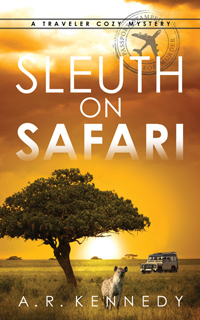
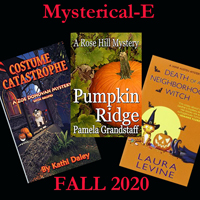
Thanks for hosting me! Since this interview I released another anthology (Heartbreaks & Half-truths: 22 Stories of Mystery & Suspense – June 2020) and Where There’s a Will, the third and final book in my Glass Dolphin series comes out Nov. 10th. Always happy to respond to readers questions.
Thank you for sharing this. It’s interesting to see other authors’ processes.
A R